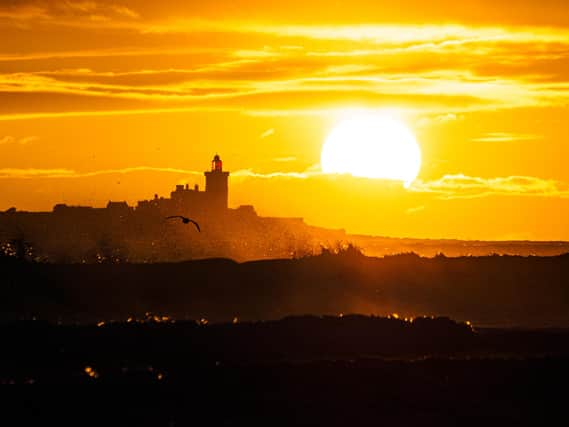CAMERA CLUB: Plan ahead for the perfect picture


What’s involved in that planning? Let’s say I am considering catching the sunrise behind Coquet Island. I first check the time the sun is coming up and the direction in which it will rise. The Photographer’s Ephemeris and Google Earth Pro are both great apps for this. In winter, I might need to stand to the north of Warkworth. Meanwhile, during the summer, I might position myself nearer Hauxley.
That location will dictate which lens I use. The last thing I want to do is swap lenses on a beach and risk sand getting into the internal workings of my camera. If the island is a long way off, I’ll probably choose a long lens. Just south of Amble the island seems almost as if you could reach out and touch it, so a wide-angle lens is often more appropriate.
Advertisement
Hide AdAdvertisement
Hide AdThen I check the tidal state. How far up the beach the sea sits changes where I can stand and thus the angle of the sun in relation to the island.
Next, I’ll visit the Met Office website. I find their weather forecast is the most accurate and it is not riddled with annoying adverts. A strong north-easterly wind probably means some swell. When a weather front has only just passed, the wind can suddenly swing around to the west. That blows spray off the surface of the big waves. In this situation I might think about either a fast shutter, stopping all movement. Alternatively, putting an ND 8 filter on the lens to slow the shutter to ¼ or ½ second. That shows the movement of the waves bust also catch the rising sun glistening through the spray.
However, if the sea is calm, then I’ll probably consider hiding all movement with the use of an
ND1000 filter for a long exposure. With that, the sea becomes silky smooth and the picture
Advertisement
Hide AdAdvertisement
Hide AdMinimalistic. Of course, knowing the tide and the weather are important for personal safety too. Being alone on a beach at sunrise doesn’t come without risks and careful planning helps reduce those. Just like when going hillwalking, I let someone know where I am and what time I am due back. I make sure my phone is well charged. There are many spots along our coast with no phone signal, so I take a whistle too. I pack clothing suitable for the weather. Warm layers and waterproofs are essential in the winter. Summertime usually calls for lighter wear but there can be sudden changes. Hypothermia kills in the summer too.
I have a pair of Derri Boots that I use on the beach. They are waterproof and warm, and the tie top stops the wind and water running down the inside when I am standing in the sea. They have a good rubber soles too that don’t slip on rocks.
Finally, I’ll check over my cameras and tripods. I make sure the lenses are spotlessly clean as dust causes lens flare when shooting into the sun. With the batteries are charged, memory cards empty and the tripod’s quick-release plate attached to the camera, I put everything in a bag to one side in my living room so I can get up and silently leave the house without waking my family. My watch alarm vibrates me awake a couple of hours before dawn and away I go.